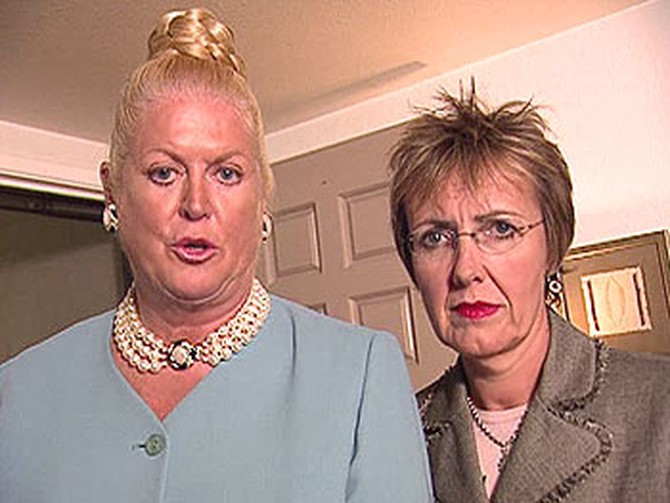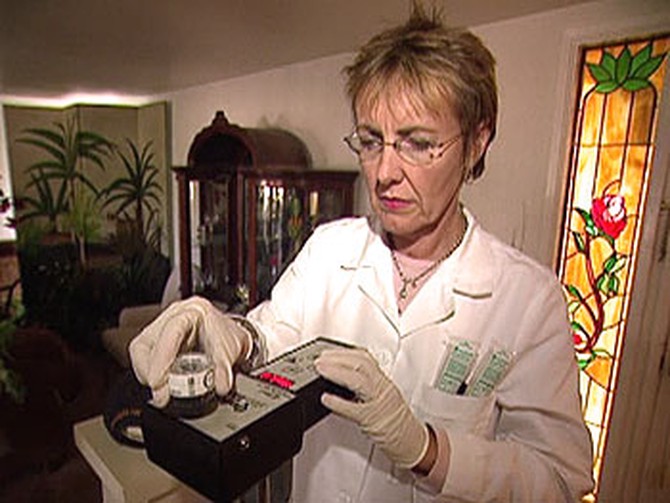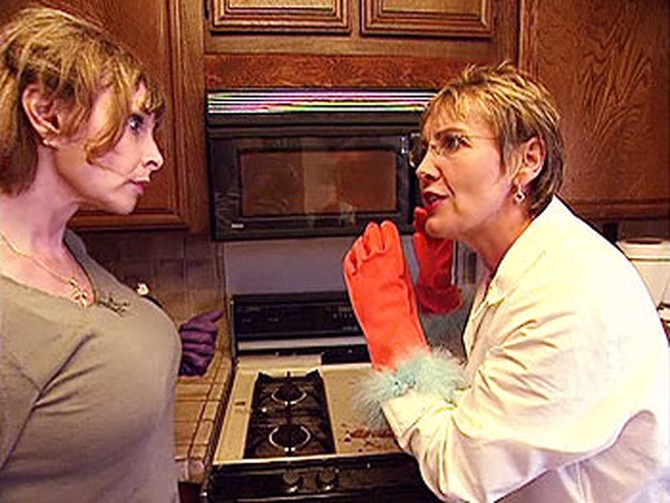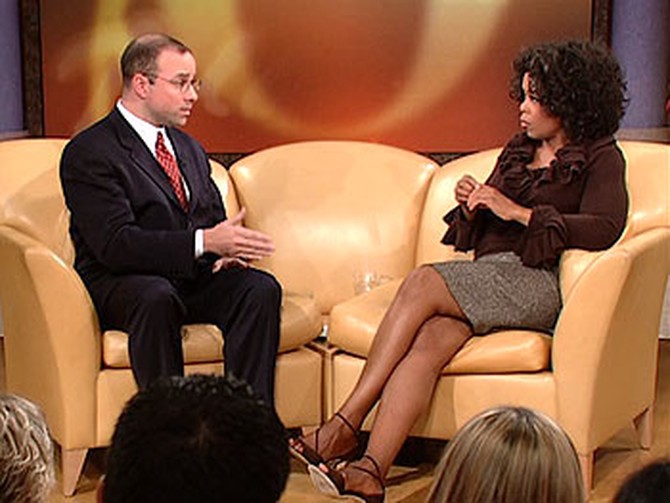A Time to Clean

Britain's dirt detectives, Kim Woodburn and Aggie MacKenzie, from Lifetime's How Clean Is Your House, are on the case to track down the dirtiest homes in America. After close inspection, these ladies roll up their sleeves and start scrubbing. Using an arsenal of scientific testing devices, the clean queens can detect what bacteria are taking over these homes in order to better kill them. When all the deep cleaning is complete, the homeowners have a brand new spotless home. For Kim and Aggie, cleaning other people's homes is truly a labor of love.
The most surprising thing Kim and Aggie find about these extraordinarily messy people is that you might not even know it to look at them. "On the street they look well groomed," Aggie says. "Well dressed. And you go into their houses: chaos!"
The most surprising thing Kim and Aggie find about these extraordinarily messy people is that you might not even know it to look at them. "On the street they look well groomed," Aggie says. "Well dressed. And you go into their houses: chaos!"

Carol Gibbons looks like she has it all together. But behind closed doors her life is a mess. "I have been married, let's see, six times. And divorced six times. I was always a really good wife: gourmet cooking, kept the house perfect. And so, after the last divorce, I was pretty irritated. I really decided to just rebel. And things have really gotten out of hand."
When they arrived, Aggie and Kim found: bird poop on the banister from Carol's pet birds; dog urine and feces all over the bathroom and even in Carol's bed; maggots in an unclean cooking pot; rotting food in the refrigerator; plates and napkins strewn all over the house; and a bathroom "that would make a frat boy blush."
Carol says that no one besides the air-conditioner repairman has been in her house to see how repulsive it is. And, even then, she lied to him. "I told him it wasn't my house," Carol says. "No one had been in there for two years, and I had him come over and I said, 'I'm only here to let you in because I have a cleaning crew coming in.' I fibbed."
When they arrived, Aggie and Kim found: bird poop on the banister from Carol's pet birds; dog urine and feces all over the bathroom and even in Carol's bed; maggots in an unclean cooking pot; rotting food in the refrigerator; plates and napkins strewn all over the house; and a bathroom "that would make a frat boy blush."
Carol says that no one besides the air-conditioner repairman has been in her house to see how repulsive it is. And, even then, she lied to him. "I told him it wasn't my house," Carol says. "No one had been in there for two years, and I had him come over and I said, 'I'm only here to let you in because I have a cleaning crew coming in.' I fibbed."

Tests on Carol's dirty home provided scientific proof of the harmful levels of bacteria in the house. "The air quality inside Carol's home was very poor," Aggie says. "There were more bacteria on your dining table than a piece of dog feces. A normal toilet bowl would have about 500 E. coli bacteria. Yours had 500,000. There were 11 million coli on your dining room table." And it didn't stop there: "Outside the house, the reading for aspergillus (mold) is about 427," Aggie says. "Inside the house were about 7,000 mold spores. That's very dangerous."

Despite the overpowering filth, it's never too late to clean up. First Aggie and Kim called in the reinforcements: their professional "clean team." After 24 hours and 50 trash bags, Carol's house was finally fit to live in.
Then they brought in veterinarian Jeff Woberg for the scoop on dog poop. "Unfortunately, dogs love us so much that they will deal with anything we give them," Dr. Woberg says. "The problem is there is bacteria in the stool sitting around here. E. coli, for example, is spreadable to people."
For an unclean, crusty microwave, Aggie offers a trick. "Take a bowl of very hot water with some lemons in it," she says, "and turn on the microwave for about five minutes. Leave that in there and the steam will soften all the dried-on particles of food and the lemons will give a lovely, fresh smell."
While cleaning the carpet, Kim tells Carol, "One of your dogs has urinated here, because I can smell it." What's the secret to cleaning that? "Club soda. Good old club soda, my dear. And elbow grease."
Then they brought in veterinarian Jeff Woberg for the scoop on dog poop. "Unfortunately, dogs love us so much that they will deal with anything we give them," Dr. Woberg says. "The problem is there is bacteria in the stool sitting around here. E. coli, for example, is spreadable to people."
For an unclean, crusty microwave, Aggie offers a trick. "Take a bowl of very hot water with some lemons in it," she says, "and turn on the microwave for about five minutes. Leave that in there and the steam will soften all the dried-on particles of food and the lemons will give a lovely, fresh smell."
While cleaning the carpet, Kim tells Carol, "One of your dogs has urinated here, because I can smell it." What's the secret to cleaning that? "Club soda. Good old club soda, my dear. And elbow grease."

Dr. David Tolin, founder of the Anxiety Disorder Center at Hartford Hospital's Institute of Living, is an expert in the treatment of hoarding.
"A lot of people are messy—I'm not the cleanest person in the world either," Dr. Tolin says. "But I think where it becomes a problem is when the person is not just messy, but impaired by their clutter. What we see with Carol, and what we see with a lot of people with hoarding problems, is that they can't use significant portions of their home for the purpose that it was intended to...We also find the person's quality of life is dramatically reduced. … And then, not inconsequentially, we find it's a big problem where the person is facing real and tangible risks as a result of their clutter, whether it's a fire hazard or the problems we saw [in Carol's house] with mold and bacteria. A lot of people with hoarding face the very real risk of losing their homes because of the clutter."
Learn more about compulsive hoarding, the signs of having the problem, and resource to get help from Dr. Tolin.
"A lot of people are messy—I'm not the cleanest person in the world either," Dr. Tolin says. "But I think where it becomes a problem is when the person is not just messy, but impaired by their clutter. What we see with Carol, and what we see with a lot of people with hoarding problems, is that they can't use significant portions of their home for the purpose that it was intended to...We also find the person's quality of life is dramatically reduced. … And then, not inconsequentially, we find it's a big problem where the person is facing real and tangible risks as a result of their clutter, whether it's a fire hazard or the problems we saw [in Carol's house] with mold and bacteria. A lot of people with hoarding face the very real risk of losing their homes because of the clutter."
Learn more about compulsive hoarding, the signs of having the problem, and resource to get help from Dr. Tolin.
Published 11/18/2004

